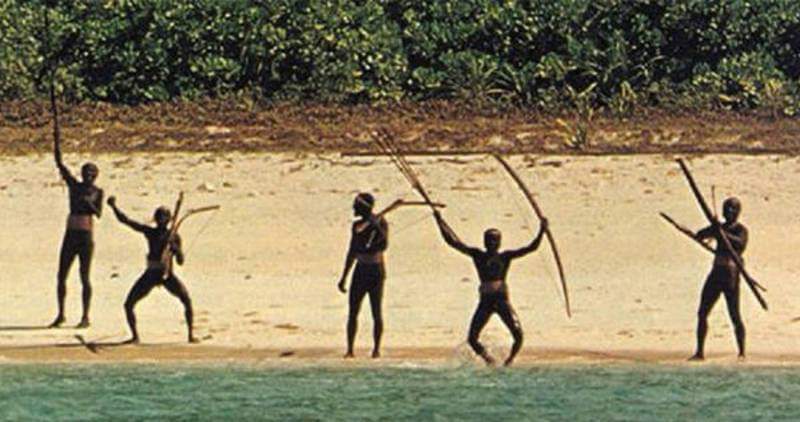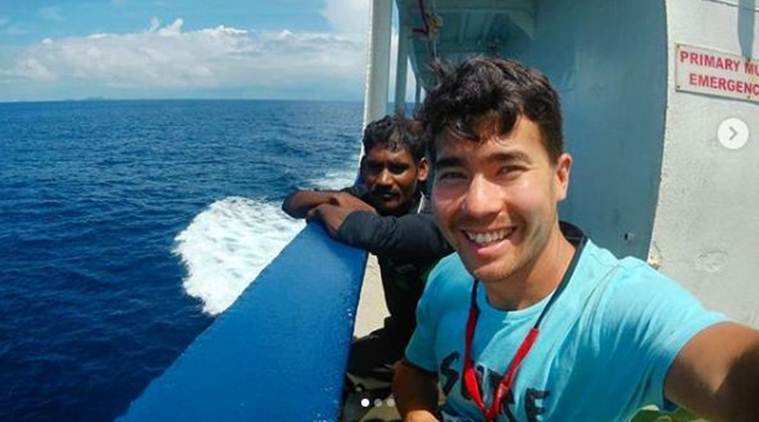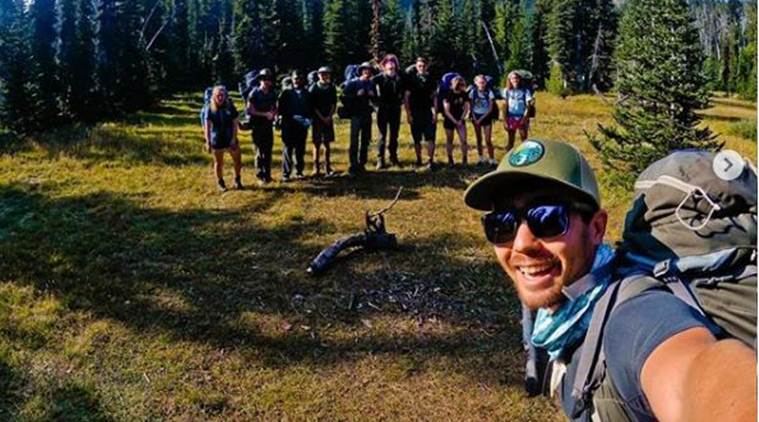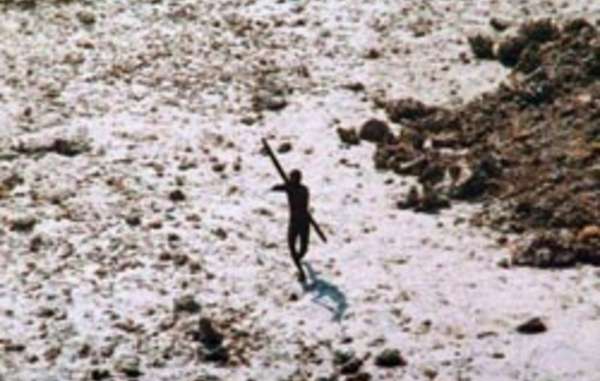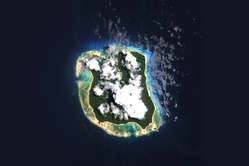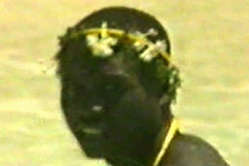An American self-styled adventurer and Christian missionary has been killed and buried by a tribe of hunter-gatherers on a remote island in the Indian Ocean where he had gone to proselytize, local law enforcement officials said on Wednesday
John Allen Chau, 26, was killed on North Sentinel Island, which is home to what is considered the last pre-Neolithic tribe in the world and typically out of bounds to visitors, said Dependra Pathak, the director general of police in Andaman and Nicobar. He was killed by members of the Sentinelese tribe using bows and arrows.
The Sentinelese Tribe of North Sentinel island in Andaman and Nicobar Islands
The Sentinelese
The Sentinelese are an uncontacted tribe living on North Sentinal Island, one of the Andaman Islands in the Indian Ocean. They vigorously reject all contact with outsiders.
It is vital that their wish to remain uncontacted is respected – if not, the entire tribe could be wiped out by diseases to which they have no immunity. Contact imposed upon other Andaman tribes has had a devastating impact.
Following a campaign by Survival and local organisations, the Indian government abandoned plans to contact the Sentinelese.
The Sentinelese attracted international attention in the wake of the 2004 Asian tsunami, when a member of the tribe was photographed on a beach, firing arrows at a helicopter which was checking on their welfare.
The Sentinelese live on their own small forested island called North Sentinel, which is approximately the size of Manhattan. They continue to resist all contact with outsiders, attacking anyone who comes near. In 2006, two Indian fishermen, who had moored their boat near North Sentinel to sleep after poaching in the waters around the island, were killed when their boat broke loose and drifted onto the shore. Poachers are known to fish illegally in the waters around the island, catching turtles and diving for lobsters and sea cucumbers.
John Alley Chau (26) was shot dead by tribesman last week when he arrived at the North Sentinel Island, which is one of the world’s most isolated regions in the area and is off-limits to visitors. (Instagram/johnachau)
He sent back some handwritten notes from the island before his death
Chau also said in the blog: “I definitely get my inspiration for life from Jesus.”
Based on his social media posts, Chau appears to have visited India multiple times in the last few years, exploring and preaching in many parts of southern India.
Chau with a group of students around Mount Adams. (Instagram/johnachau)
“We recently learned from an unconfirmed report that John Allen Chau was reported killed in India while reaching out to members of the Sentinelese Tribe in the Andaman Islands,” members of the Chau family said in a post on his Instagram page.
The family described him as a “beloved son, brother and uncle” as well as a Christian missionary, wilderness emergency medical technician, soccer coach and mountaineer.
“He loved God, life, helping those in need and had nothing but love for the Sentinelese people,” the family said. “We forgive those reportedly responsible for his death. We also ask for the release of those friends he had in the Andaman Islands.”
The family asked that local contacts not be prosecuted in the case.
“A murder case has been registered against unknown persons,” Mr Pathak said, adding that the local fishermen suspected of illegally ferrying Chau to the 60-square-km island had been arrested on separate
Hours before he was shot dead with arrows by an endangered tribe in the Andaman and Nicobar Islands, 26-year-old John Allen Chau had written a letter to his parents, asking them not to be “mad at them or at God” if he was killed.
Chau was shot dead by tribesmen last week when he arrived at the North Sentinel Island, which is one of the world’s most isolated regions in the area and is off-limits to visitors. He wanted to convert the tribes to Christianity.
In the letter dated November 16 and which was later obtained by DailyMail.com, Chau told his parents, “You guys might think I’m crazy in all this but I think it’s worth it to declare Jesus to these people. Please do not be angry at them or at God if I get killed.”
“Rather please live your lives in obedience to whatever he has called you to and I’ll see you again when you pass through the veil. This is not a pointless thing – the eternal lives of this tribe is at hand and I can’t wait to see them around the throne of God worshipping in their own language as Revelations 7:9-10 states.”
“I love you all and I pray none of you love anything in this world more than Jesus Christ,” he said.
Chau signed off the letter with his name and ‘Soli Deo Gloria‘, which is Latin for Glory to God alone.
Besides the letter, Chau had also penned down several journal entries in which he expressed his desire and commitment to spreading the word of God among the tribe.
Buried In The Sand
Police said in a statement that they had launched an investigation into Chau’s death after being contacted by the U.S. consulate in Chennai.
“We are aware of reports concerning a US citizen in the Andaman and Nicobar Islands,” a consulate spokeswoman said in an email, but declined to provide further details.
Mr Pathak said a Coast Guard vessel with police and experts on the tribe had gone to scout the island and formulate a plan to recover Chau’s body. North Sentinel Island is about 50 km west of Port Blair, the capital of the island cluster.
Chau made two or three trips to the island by canoe from Nov. 15, making contact with the tribe but returning to his boat, Pathak said. He told the fishermen on Nov. 16 he would not come back from the island and instructed them to return home and pass on some handwritten notes he had made to a friend.
The Contact with Sentinelese Tribe
In the late 1800s M.V. Portman, the British ‘Officer in Charge of the Andamanese’ landed, with a large team, on North Sentinel Island in the hope of contacting the Sentinelese. The party included trackers, from Andamanese tribes who had already made contact with the British, officers and convicts.
In the wake of the 2004 tsunami this member of the Sentinelese tribe was photographed firing arrows at a helicopter. © Indian Coastguard/Survival
They found recently abandoned villages and paths but the Sentinelese were nowhere to be seen. After a few days they came across an elderly couple and some children who, ‘in the interest of science’ were taken to Port Blair, the island’s capital. Predictably they soon fell ill and the adults died. The children were taken back to their island with a number of gifts.
It is not known how many Sentinelese became ill as a result of this ‘science’ but it’s likely that the children would have passed on their diseases and the results would have been devastating. It is mere conjecture, but might this experience account for the Sentinelese’s continued hostility and rejection of outsiders?
North Sentinel Island, home of the Sentinelese, as seen from above. © Survival
During the 1970s the Indian authorities made occasional trips to North Sentinel in an attempt to befriend the tribe. These were often at the behest of dignitaries who wanted an adventure. On one of these trips two pigs and a doll were left on the beach. The Sentinelese speared the pigs and buried them, along with the doll. Such visits became more regular in the 1980s; the teams would try to land, at a place out of the reach of arrows, and leave gifts such as coconuts, bananas and bits of iron. Sometimes the Sentinelese appeared to make friendly gestures; at others they would take the gifts into the forest and then fire arrows at the contact party.
The Sentinelese enjoy excellent health, unlike those Andamans tribes whose lands have been destroyed. © Survival International
In 1991 there appeared to be a breakthrough. When the officials arrived in North Sentinel the tribe gestured for them to bring gifts and then, for the first time, approached without their weapons. They even waded into the sea towards the boat to collect more coconuts. However, this friendly contact was not to last, although gift dropping trips continued for some years, encounters were not always friendly. At times the Sentinelese aimed their arrows at the contact team, and once they attacked a wooden boat with their adzes (a stone axe for cutting wood). No one knows why the Sentinelese first dropped, and then resumed their hostility to the contact missions, nor if any died as a result of diseases caught during these visits.
In 1996 the regular gift dropping missions stopped. Many officials were beginning to question the wisdom of attempting to contact a people who were healthy and content and who had thrived on their own for up to 55,000 years. Friendly contact had had only a devastating impact on the Great Andamanese tribes. Sustained contact with the Sentinelese would almost certainly have tragic consequences.
In the following years only occasional visits were made, again with a mixed response. After the Tsunami in 2004, officials made two visits to check, from a distance, that the tribe seemed healthy and were not suffering in any way. They then declared that no further attempts would be made to contact the Sentinelese.
Their extreme isolation makes them very vulnerable to diseases to which they have no immunity, meaning contact would almost certainly have tragic consequences for them.
Following a campaign by Survival and local organisations, the Indian government abandoned plans to contact the Sentinelese, and their current position is still that no further attempts to contact the tribe will be made.
Periodic checks, from boats anchored at a safe distance from shore, are made to ensure that the Sentinelese appear well and have not chosen to seek contact.
What’s happening now ?
( Update As of Now, 29/11/2018 1:50 PM IST)
This sentinel island currently comes under RAP (Restricted Area Permit) along with 29 other islands which are restricted for others to enter in. After this incident, the ministry of Home affairs thinking of relaxing the RAP permit to all these 30 islands.
The National Commission for Scheduled Tribes (NCST) Chairperson Nand Kumar Sai has called for all necessary steps by the government to maintain the “Inviolability of North sentinel island” also the commission is of the view that the decession of the ministry of Home affairs on giving relaxation of RAP. In this review process, the commission is going to send their official team to Andaman and Nicobar Islands on December 4-5 for investigation.
As per Times of India, a leading news agency, in a statement issued by the commission the members have registered their concern that ” any agressive step to recover the body will distrub the peace and tranquility on the island”.
The commission was informed that a five member commitee lead by secretary (Tribal Welfare ) of the Andaman and Nicobar administration has been constituted by Lt. Governor of the union territory.
It will review the mechanism to prevent the landing of foreigners over the north sentinel island and posting the suggestions on to prevent such incidents in future. They are going to submit the report in next 30 days.
The commission had advised the government to be “Ultra – Sensitive” to the vulnerability of the ‘Particularly Vulnerable Tribes Groups’ (PVTGs) such as the tribes of Northern Sentinel Islands, and any attempt for tourism development etc.
There are many hoaxes already spreading over the social media that the Indian government is going to send 5,000 of its army to capture this island are completely false. Please don’t believe in such news. Please follow us for ground level reality.
